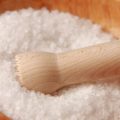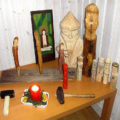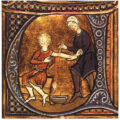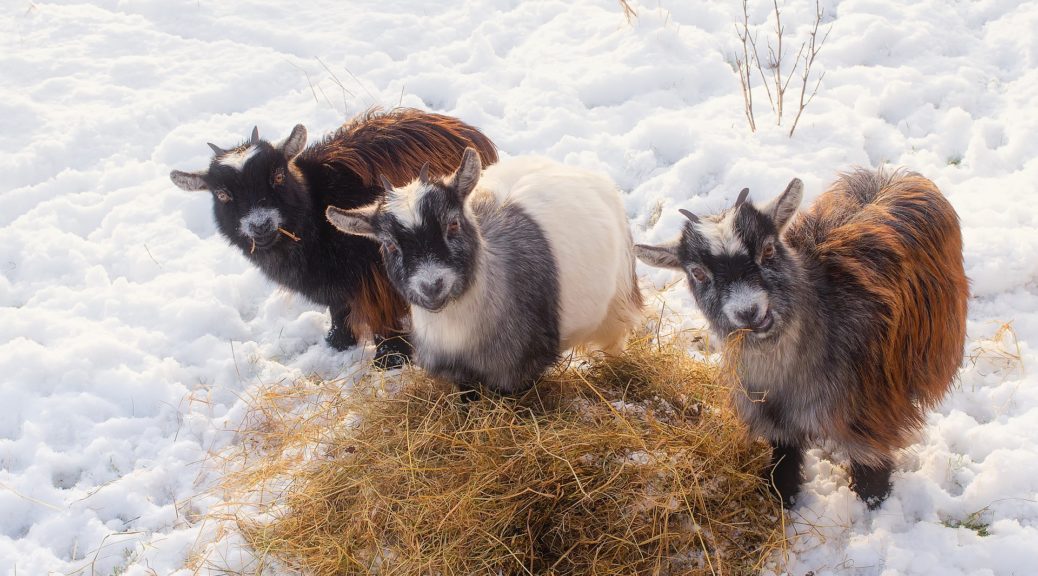
Just Kidding (or How to Spend Your Days without Sleep)
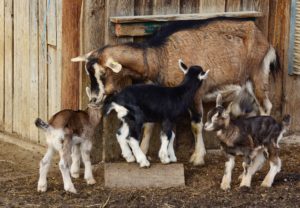 Ah, the Heathen life. The Rational Heathen has goats, which means spring kids, and the insanity that brings. If they all had lived, I would’ve had ten Kids on the Block. Yeah, bad pun, deal with it. Right now, I’m down to seven and as bad as having a 30 percent attrition rate is, it beats out the really bad year when I lost all the kids due to various aliments.
Ah, the Heathen life. The Rational Heathen has goats, which means spring kids, and the insanity that brings. If they all had lived, I would’ve had ten Kids on the Block. Yeah, bad pun, deal with it. Right now, I’m down to seven and as bad as having a 30 percent attrition rate is, it beats out the really bad year when I lost all the kids due to various aliments.
I Hate Spring, and Here’s Why
Here in the Northern Rockies, the weather is typical spring. In other words, the weather sucks to pull goat babies out of the butts of pregnant doe goats. Temperatures dip below 20 degrees Fahrenheit at night and the days can soar as high as 40 or 50 degrees. And it alternately rains and snows. And melts. And makes everything muddy. And I mean everything. It sucks, especially for newborn goats who really have no defense against the weather. So, even though it is Freyr’s season, it is a real pain in the ass for someone like me who has livestock. I’ve been spending most of my time awake and going down to the barn every two to four hours to check on the does. So, it means long nights.
Kid Train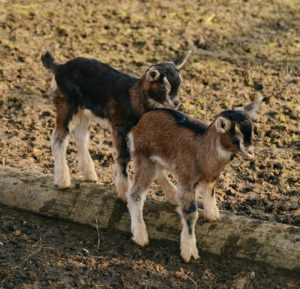
Around here it’s been guess and by golly when they actually were bred. That’s my own fault because I got a new goat buck who was just a kid. So, I left him with the does so I could be sure they would be bred. All this winter, I watched the does balloon with babies and waited. One of my best goats had twins, only to have them succumb to pneumonia. Then, the kid train started. I had four does deliver in two days. Eight kids total.
One didn’t survive despite my ministrations. It happens, but I take it personally every time. No idea what killed him. If we had decent goat vets out here, I’d consider a necropsy, but the last necropsy told me that I had a healthy, dead kid. True story, that.
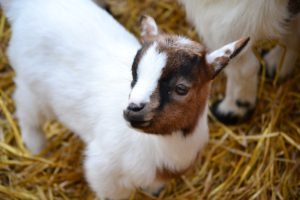 It’s Not Easy
It’s Not Easy
Right now, I have seven kids with a couple being somewhat sketchy because they had bacteria infections. I’m treating them will all the medication I can muster. Kids born during mud season are just about guaranteed to have some illness. What’s more, I have one who is a quarter of the size of the others and who has a birth defect that a kid last year had. Same mom.
The mom doe goat in question is about as disappointing as they come. Her first kid was born with two long back legs and died within a day. The second kid from last season had a fused toe joint that curled the hoof under the leg that made him very lame. He survived only to die of bloat. The little doeling is a runt and has one leg where the toe joint has somewhat curled and is twisted a bit. Two different unrelated bucks; same doe. To make matters worse, I can’t milk that doe because she is wild in temperament despite the handling, and she drinks off herself. She also drinks off her mom.
So today, we slaughtered the doe goat and butchered her for meat. Not what I would prefer, but either you make it in my herd or you don’t. I can’t afford another pet goat, especially one with a bad temperament. Her kids, if they survive, won’t be bred. Since their father was a cashmere buck, I’ll be keeping them for fiber (wool).
Spring and the Heathen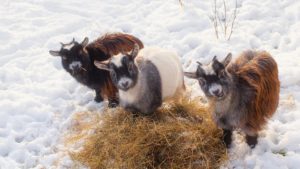
Despite my obvious dislike for the season, Heathens in the past looked forward to spring. Sure, it meant lambing, kidding, calving, and planting seeds, but what it really meant was the onslaught of winter was finally over. I suspect that many people and livestock went into survival mode in the wintertime. Even with winter grazing, livestock couldn’t really forage for food as they could in the spring and summer, so either had to be sold, slaughtered, or had to be fed. This meant that you could only keep the animals you could afford to feed or the land could support. This also meant you had to keep your breeding stock and hope that the critters made it through the winter.
Spring was the return of life, and therefore the return of food for our ancestors’ livestock. New kids, calves, and lambs meant an abundance of food for the next winter, if they survived the harsh realities of an early spring. Livestock was typically smaller than modern day’s version, so they didn’t need near as much to eat as their modern counterparts, but they didn’t produce as much either. I suspect the goats from the past were hardier than those we have today. Those who didn’t survive didn’t pass on their genetic code.
Kids and the Modern Heathen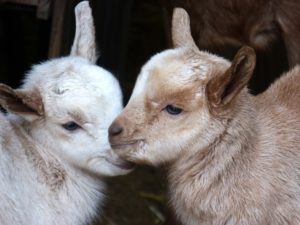
As a modern Heathen, I am slightly more self sufficient than city dwellers, living a semi-subsistence lifestyle. But even I must use modern technology to keep my animals alive during this topsy-turvey time of spring, here in a land with unpredictable weather. We get warm and cold spells, rain and snow, and of course, wind that threatens any young creature’s life. I look at the deer around the house and am amazed that they live as long as they do with the same weather, predators, and diseases we must endure. It is a true testament to life that despite adversity, wildlife thrives.
I have three crates full of kids that need to be hand raised. I have five goats who need to be milked. I’ll get about two gallons of milk a day — enough to feed the little ones with some addition of cow juice. I’ll also bring hay up to get them started.
A Lesson I’ve Learned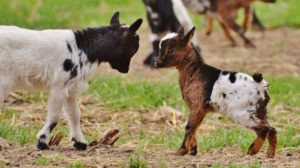
If there is a lesson to be learned by this, it is that our ancestors had hard lives. They didn’t have the antibiotics and other medicines I have available. They probably sweated over their livestock as much as I do, or even more, because they couldn’t just go to the store and buy a package of hamburger if it didn’t work out. Each dead kid, each failed milker, and each failed crop put them one step closer to starvation.
It gives you an idea how far we’ve gone as a species. Even our poorest people in first world countries fare better than that. There are enough food pantries in my area that can prevent hunger for those who do not qualify for food stamps or SNAP benefits. The Heathen then relied on their family and kindred to prevent starvation, but it could be a closely run thing. So, even though I pay homage to the ancestors, quite frankly, I’ve had enough of a taste of their lifestyle to know that it’s harder than it appears. At least I’m unlikely to starve if I lose any more kids.

